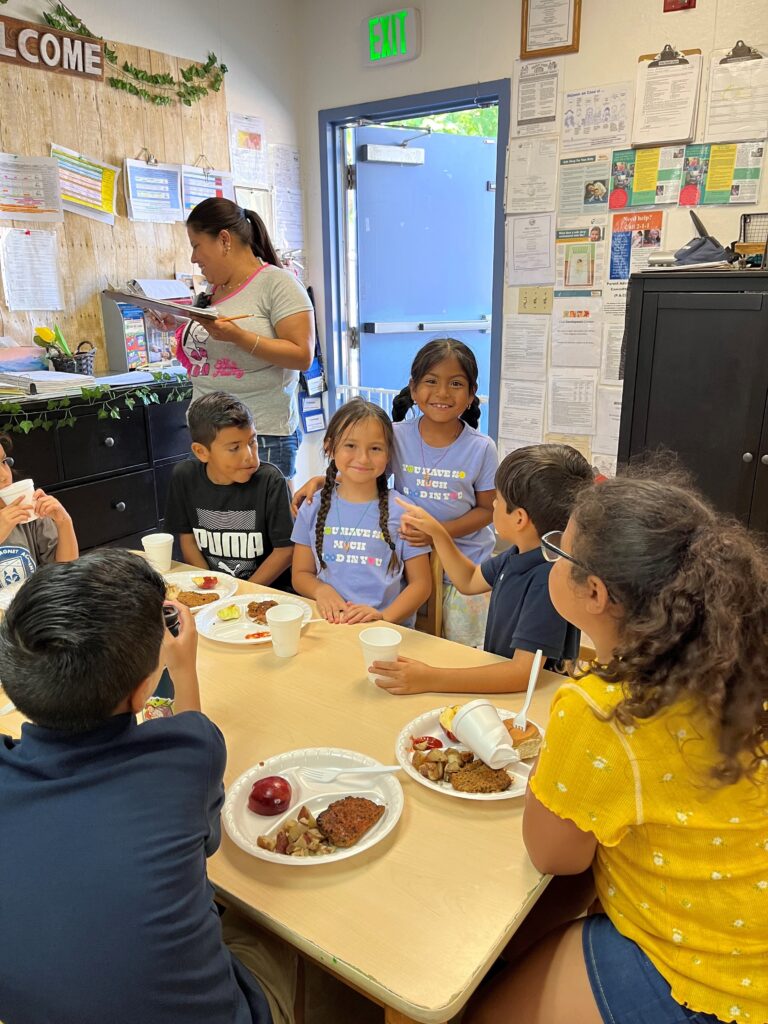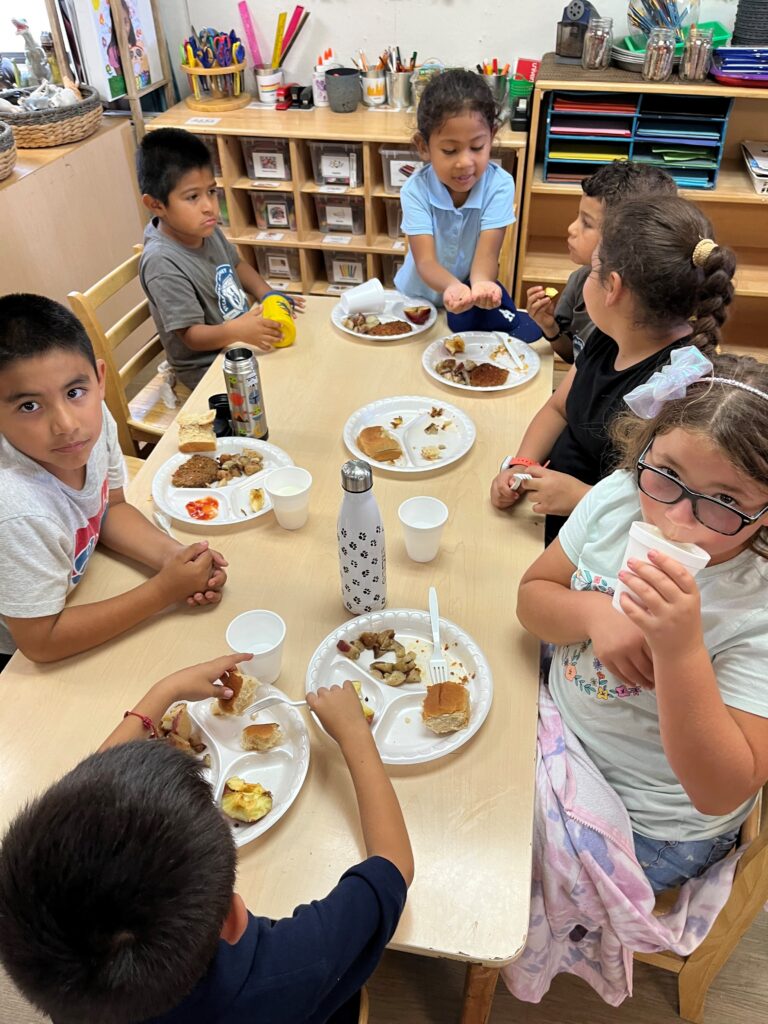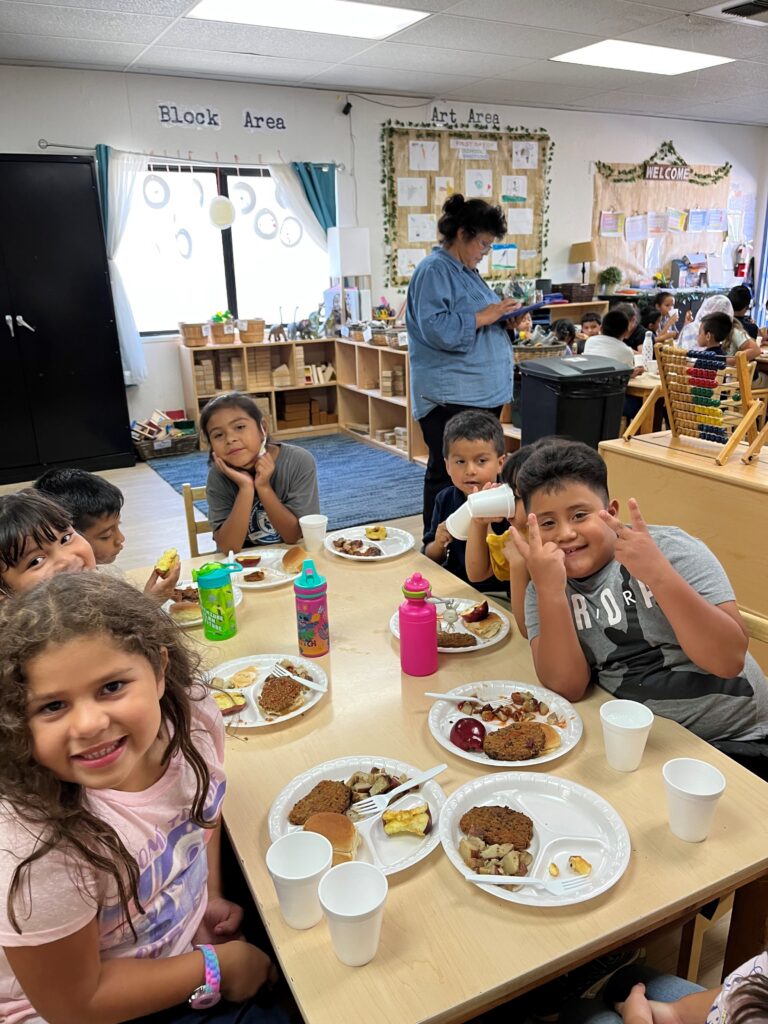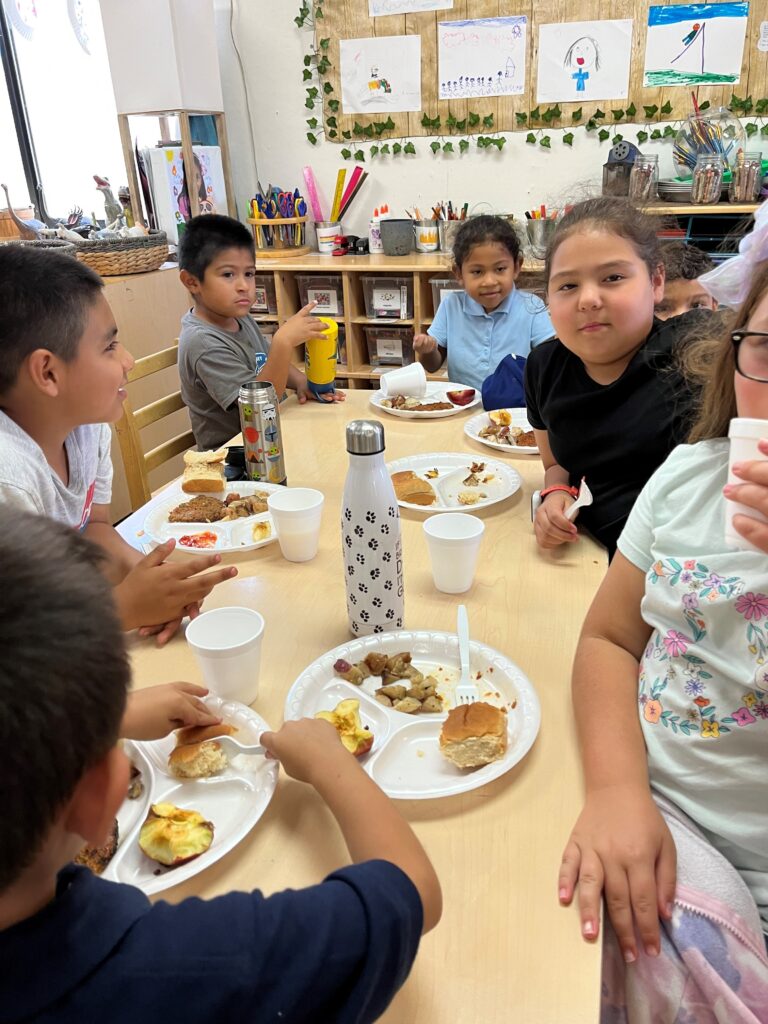September 2, 2022
At Risk After School Program – Super Snack
By Giulianne Pate & Stephanie Collett
The At Risk After School Program (AAFP) – is a program that is additional federal reimbursement for our school-age after-school programs during the school year. The program is located in lower income areas and qualifies based on the percentage of free and reduced children attending the adjacent school. There is a “super snack” that is served after school for the children that has all the components of a meal versus a two-component snack. Half of the centers are currently serving the super snack and the other half just a small snack. We’re hopeful that they will all be back to serving super snack this fall. We recently had a chance to learn all the healthy details from our Nutrition Team recently.


You mentioned that a super snack is also known as dinner. Does a super snack typically replace a dinner meal that a child would have at home? Super snack is just our term, not sure why we really changed it, but it stuck. So yes, it is supper/dinner. Super snack is a meal compared to a smaller snack another center may serve.
What does a super snack consist of? Super snack consists of 5 food components, whereas a snack would consist of 2 food components. Food components is a CACFP term for “food group”. Super snack consists of: Low-fat milk, lean protein, fruit, vegetable, and a whole grain.
What qualifies a center to serve a super snack, is it strictly centers that it qualify for the At Risk After School Program? Any center that is on an elementary school campus that serves over 50% free and reduced meals qualifies to serve super snacks. Super snacks are reimbursed at the free rate whereas other reimbursements for breakfast, lunch, and snacks are contingent upon the collection of meal benefits and other data. Any center can provide super snack; however, it is only the “at risk” centers that will receive the full meal reimbursement.
What is the importance of having a super snack available to families? Super snack provides children with a full meal after school. This provides food security for the children and assures the families that their child is receiving a quality meal before heading home where food insecurity may be impacting the family.

